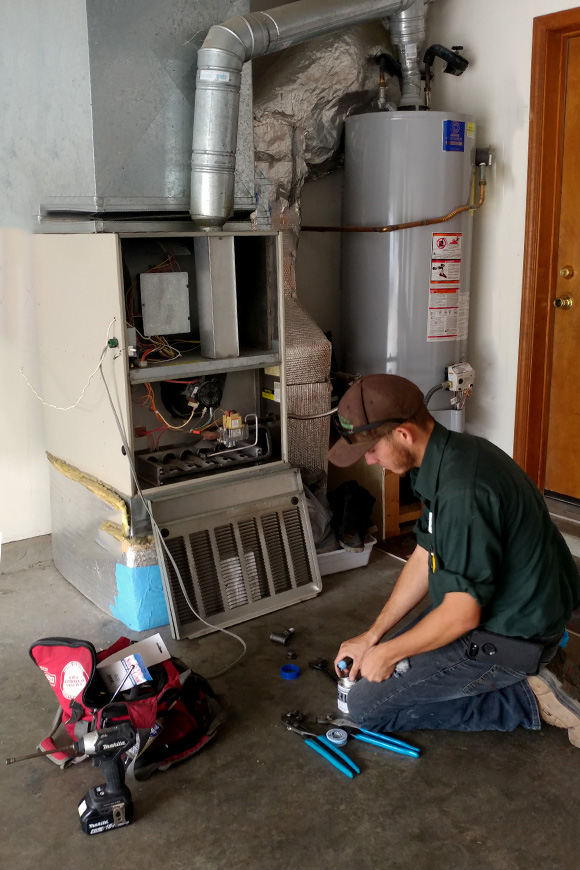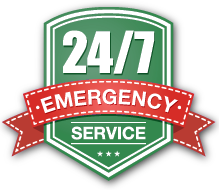
When is it Time to Replace Your Furnace?
As the central piece of your home’s heating system, it is very important that your furnace be in proper working order. While properly maintained furnaces can last for quite some time, there does eventually come a point where your furnace must be replaced. Fortunately, there are several key warning signs that can alert you to the need to replace. With this guide, you will know when to replace your furnace, how to find an energy efficient option, and how to choose a contractor who can perform the removal of your old furnace and installation of the new one.
Furnace Warning Signs
When it comes to furnaces, there are seven warning signs that indicate replacement:
- Age: One warning sign that your furnace may need to be replaced is old age. Most furnaces last for about 14-20 years. If you are uncertain about the age of your furnace, check to see if it has a pilot light. If so, it is mostly likely more than 25 years old. When your furnace begins to reach this age range, it is definitely time to begin looking at replacements.
- Growing Bills: As furnaces get older, they become less and less energy efficient. This is an especially large problem for furnaces that have not been properly maintained. When your furnace loses efficiency, it requires more energy to produce the same quantity of heat. This will cause your gas and electric bills to rise.
- Recent Repairs: Has your furnace been repaired within the past two years? If so, this could be an indication that a replacement is necessary. Most furnaces require repairs during the last two years of their existence. Rather than spending a large amount of money to repair the furnace only to have it break again, you may want to consider replacement.
- Comfort: If your home feels too hot in certain areas and too cold in others, or if you are constantly adjusting the thermostat, your furnace may have lost the ability to distribute heat properly throughout your house. If this is the case, you should replace it.
- Yellow Flame: The flame on your burner should be blue. If it turns yellow or flickers, this could indicate the presence of carbon monoxide, which is toxic. Other potential signs include excessive moisture on windows and other cool areas, streaks of soot by the furnace, and rust on the appliance jacks, vent pipe, flue pipes, or other connections between pipes. Malfunctioning equipment can also cause the upward draft in your chimney to disappear and water to leak from your vents, flue pipes, or the base of your chimney.
- Carbon Monoxide Symptoms: If your furnace is leaking carbon monoxide, you and your family will exhibit certain symptoms. These include nausea, headaches, disorientation, a sense of burning in the eyes or nose, and symptoms similar to the flu. If you suspect carbon monoxide poisoning, you should call a gas service technician right away along with opening windows to air out your house and furnace room. Older furnaces are more likely to have key components malfunction causing increased danger of carbon monoxide poisoning.
- Strange Noises: If your furnace makes strange noises such as squealing, popping, banging, or rattling, this indicates that it is nearing the end of its life. You may also hear your furnace blower run excessively or turn on and off often.
Energy Efficient Furnaces
Even if you do not see the warning signs of a failing furnace, you may want to replace your furnace to improve efficiency. Newer furnaces are much more efficient, and you can also find furnaces that have the ENERGY STAR® label, which means they are government-approved for maximum efficiency. When making the decision to replace, you should consider the efficiency of your current furnace, how much your fuel costs, and how much energy is necessary to heat your home.
While older furnaces are about 56-70% energy efficient, energy efficient furnaces can rate up to 98.5% efficient. For those who live in very cold climates, it is economical to get the most energy efficient system. If you live in a milder climate and your heating costs are lower, it may be more cost-effective to choose a system that is 80% efficient. Choosing any furnace with the ENERGY STAR® label will vastly reduce your annual heating costs – your savings will vary based upon the age of your old furnace and the efficiency of your new one.
Choosing a Contractor
When selecting a contractor to install your new furnace, you should ensure that the company you work with is reputable. If you have a contractor who regularly services your furnace, he or she should be able to install the new one as well. If not, first gain recommendations from family, neighbors, and friends. Then, do your research – find out if the contractor has liability insurance and workers’ compensation coverage. The contractor should also have experience and be licensed and bonded. Hiring a non-licensed person or a handyman leaves u with no coverage home owner’s insurance should an accident happen. U also retain no legal grounds for a lawsuit if the work is installed incorrectly.
At Albuquerque Plumbing, Heating & Cooling, we are licensed, bonded, and insured. Contact Albuquerque Plumbing, Heating & Cooling today to learn more about our furnace installation services.



